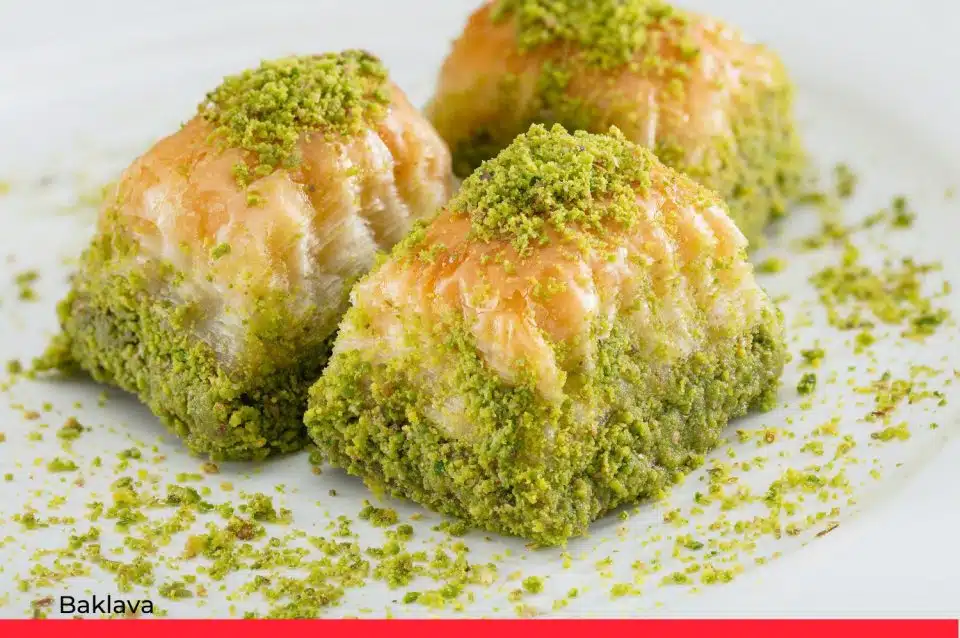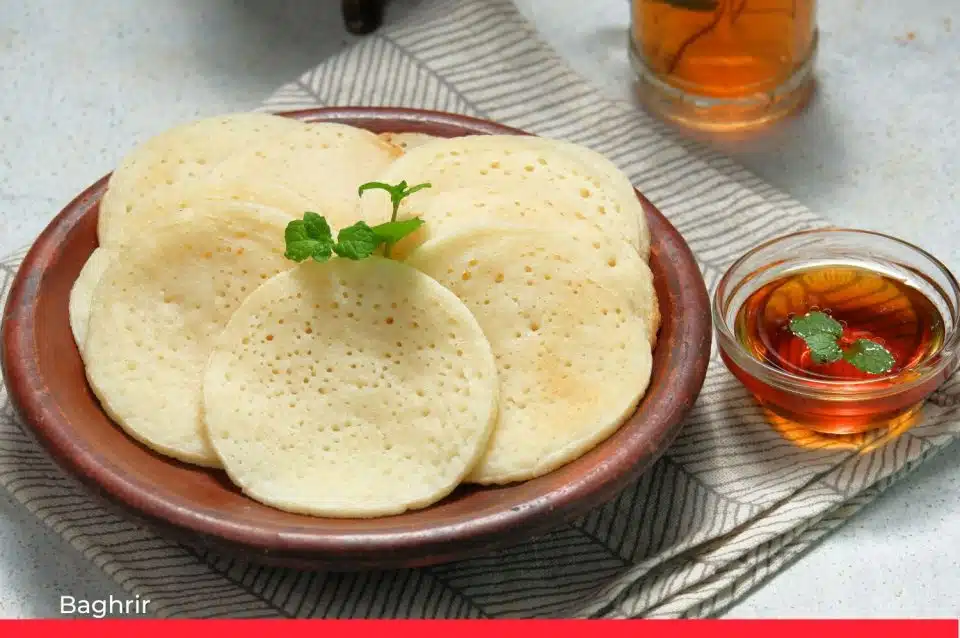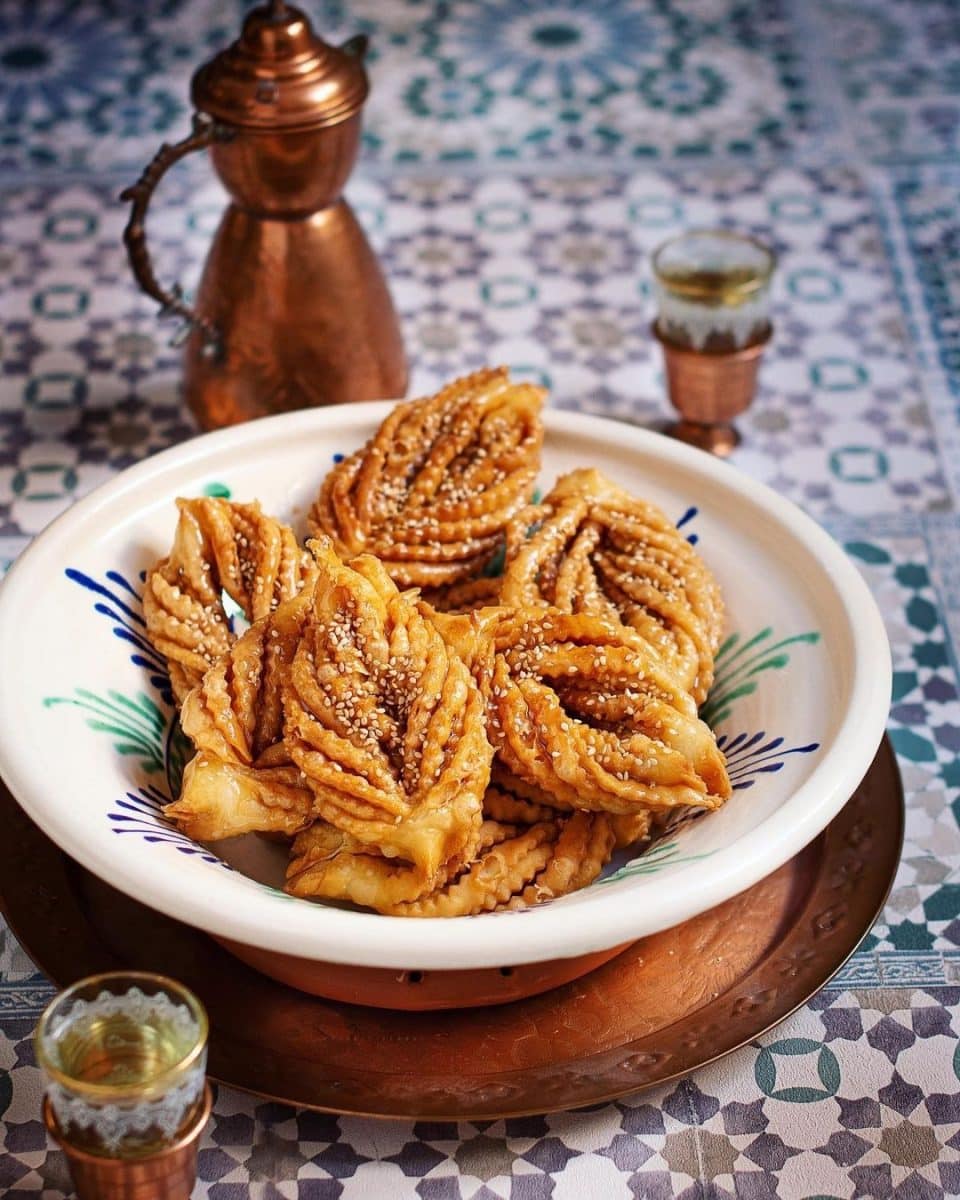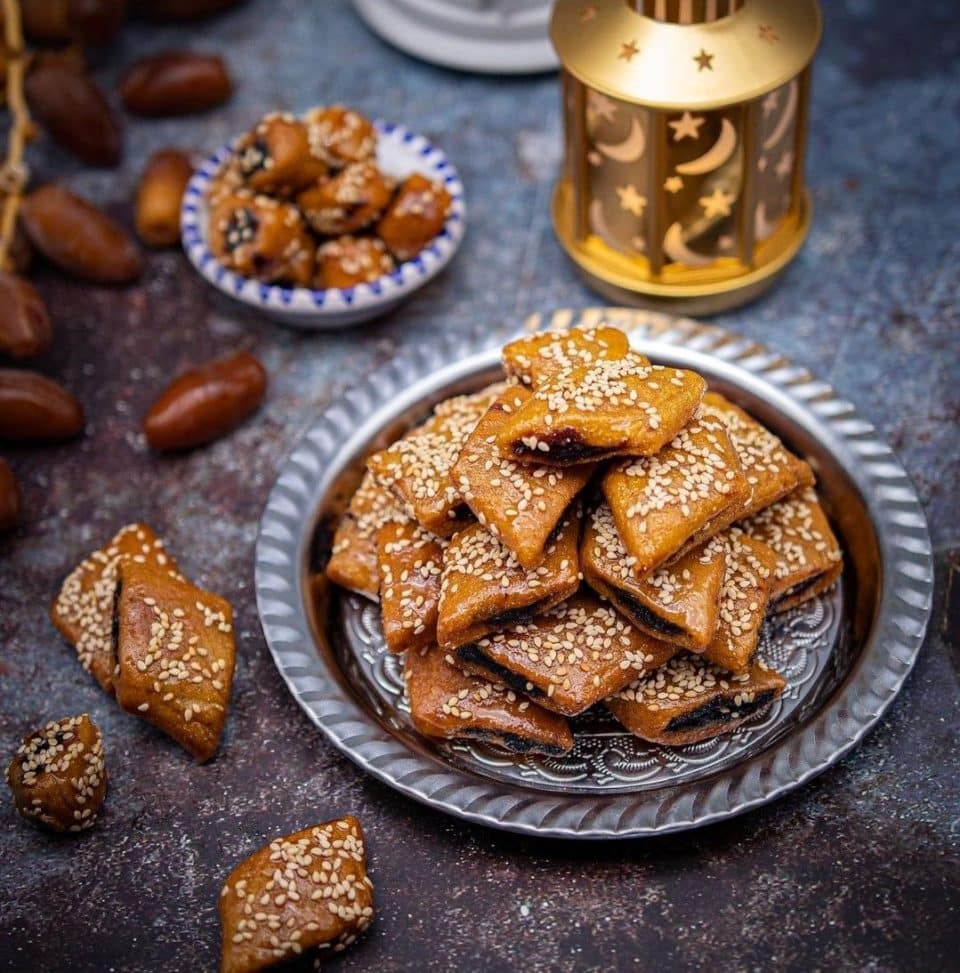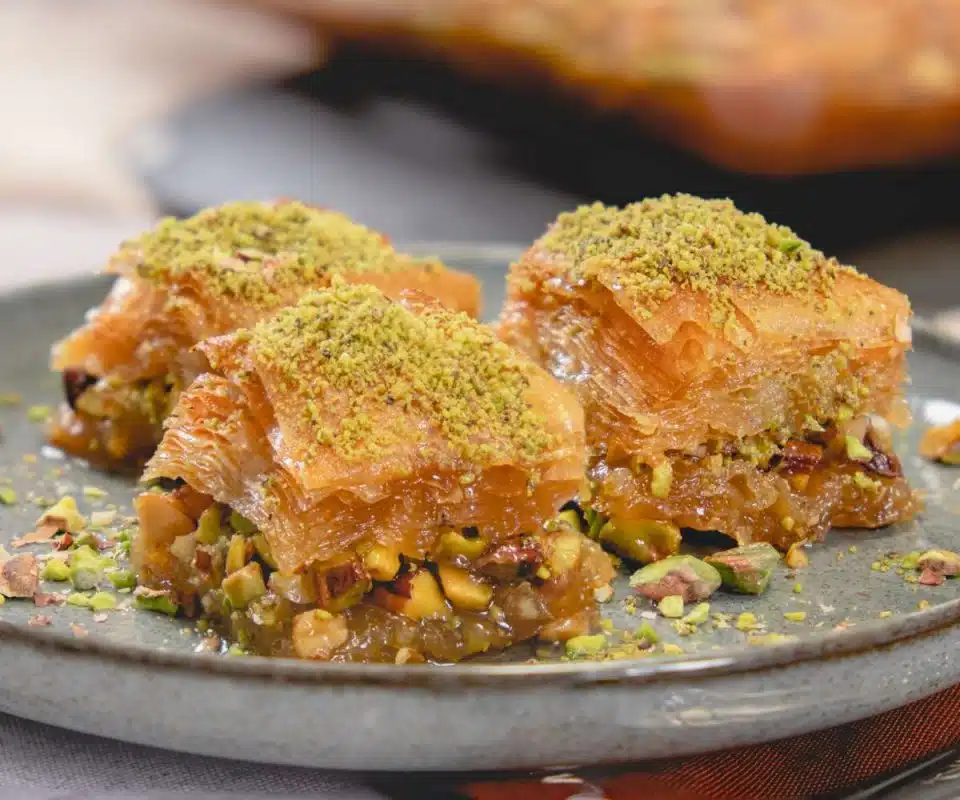The first thing that probably comes to mind when you think of Morocco, the land of culinary wonders, is vibrant flavors, aromatic spices, and a delightful array of desserts. It’s no wonder that Moroccan cuisine has earned a place on UNESCO’s World Heritage list!
Made with an extremely rich variety of local products such as Argan oil, olive oil, dry fruits, and so many spices, Moroccan cuisine is rightfully rated as the number one food on the entire African continent and one of the top cuisines globally.
Moroccan food derives its vibrant flavors from the country’s cultural diversity, which serves as a genuine melting pot of Amazigh (indigenous citizens), Arabic, Andalusian/Mediterranean, and other cultures.
Moroccan sweets and desserts follow suit and serve as a true reflection of the nation’s rich cultural heritage, combining traditional ingredients. This exceptional amalgamation has resulted in a unique fusion of flavors that, although unplanned, has created a magical culinary experience.
Get ready to be captivated by the irresistible charm of Moroccan desserts. Here are the most famous Moroccan desserts you have to try when you visit this beautiful country.
1. Feqqas (Moroccan Biscotti)

Feqqas are deliciously crunchy and aromatic cookies that hold a special place in Moroccan traditions, often enjoyed alongside mint tea in the afternoon. These irresistible sweets undergo a unique baking process.
The dough is shaped into logs, baked once, and then covered with a clean, damp cloth overnight. The next day, the logs are sliced into bite-sized pieces and baked again.
Made with a blend of flour, whole almonds, sesame seeds, and dried fruits, these treats offer a delightful combination of textures and flavors.
The multilevel baking process and the whole toasted nuts inside, make Feqqas satisfyingly crunchy and delicious while the sweetness of the dried fruits adds an extra layer of flavor. Feqqas are a popular snack during weddings, feasts, and various celebrations.
2. Chebakya (The Ramadan Cookie)

This is a must-have for every Ramadan table, often enjoyed alongside the traditional Harira soup.
Chebakya is a delicious Moroccan sweet that is perfectly golden and fried. It is made with a combination of toasted sesame seeds, ground anise, cinnamon, and other ingredients. After frying, it is soaked in a mixture of honey and orange blossom water.
This iconic pastry has a unique and intricate shape, which is where its name chebakya, meaning the interlocking, comes from.
Chebakya holds a special significance in both cultural and religious contexts. It is not only a key part of Ramadan iftar, but it also serves as a meaningful ritual. In the weeks leading up to Ramadan, young children gather together to learn the art of shaping chebakya from the older generations.
Creating intricate shapes is seen as an accomplishment, and it becomes a bonding experience for the whole family.
3. Sellou (Sfouf)

Sellou, also known as Sfouf, is an incredibly nutritious sweet that combines a rich variety of ingredients, including almonds, sesame seeds, olive oil (or melted butter), honey, anise, roasted flour, and more.
This sweet has a dense and crumbly texture and is packed with energy, making it a perfect choice during Ramadan. It is also commonly served at postpartum parties to help the new mother recover. Sellou can be beautifully decorated and given as favors to guests.
The recipe and appearance of Sellou vary from region to region, and it is common to incorporate local ingredients such as Argan oil. Regardless of the specific recipe, Sellou stands out as a unique sweet because it is more than just a pastry — it serves as a nourishing supplement. It breaks the stereotype of traditional sweets and offers a satisfying and nutritious treat.
4. Qrichlate

Qrichlate are tiny buns that are prepared once a year as part of a religious celebration called Achoura. These sweets are typically made in large quantities, and it is rare for just one person to make them. The process is a collaborative effort, emphasizing teamwork.
The main ingredients used in qrichlate are flour, oil, sugar, sesame seeds, and anise. Once the buns are ready and rested, they are mixed in large bowls with dried fruits and nuts such as dates, figs, dried grapes, and peanuts. Qrichlate is then served with mint tea to visitors throughout the day.
5. Meskouta (Moroccan Orange Cake)

Meskouta is a mouthwatering Moroccan orange cake that holds a prominent place on afternoon tea tables in many Moroccan households.
There are various recipes for meskouta, each unique to different cities. The key ingredients are eggs, sugar, oil, orange juice, orange zest, vanilla sugar (some variations include yogurt or milk), flour, and sugar. Making meskouta is relatively easy and offers plenty of room for creativity.
You can choose to glaze it with jam, honey, chocolate ganache, or any other topping, or even leave it plain!
6. Briouate

Briouate are golden triangles of crispy fried pastry (Filo) filled with delicious almond paste and dipped into a mixture of honey and orange blossom water. This Moroccan classic is TO DIE FOR.
It is everyone’s favorite during Ramadan iftars (the first meal to break the fast at sunset), feasts, and any special occasion.
Briouate is mainly served with Moroccan mint tea along with other pastries in the afternoon or during the day when receiving visitors during feasts and special occasions.
7. Ghriba

Ghriba is an umbrella name of a group of cookies that are all of the same round shape and have a perfectly cracked top.
This cookie can be enjoyed with mint tea in the afternoon, at parties, or for feast breakfasts. The cool thing is that you never get bored with this one as there are so many versions of it, making it suitable for every taste. Let’s name some: coconut ghriba, semolina ghriba, ghriba behla (more flour, less crispy), and ghriba nkhala (bran).
This pastry can be found on every wedding and party table and is affordable to everyone, which makes it an absolute favorite.
8. Mhencha

Mhencha, also known as snake cake, derives its name from its distinctive snake-like shape. Despite its dense texture and intense sweetness, this dessert has been a staple at wedding buffets for generations.
Mhencha is crafted by layering almond paste within werqa (filo) pastry, baking it until crisp, and then drenching it in honey syrup. It can then be decorated with edible rose petals, sugar powder, or toasted almonds.
Mhencha appears at every Moroccan wedding and it’s almost the only recipe that doesn’t have more than one version. This classic remains a nostalgic dessert, making the childhood of many generations, especially 1970’s and 80’s babies.
9. Kaab el Ghazal
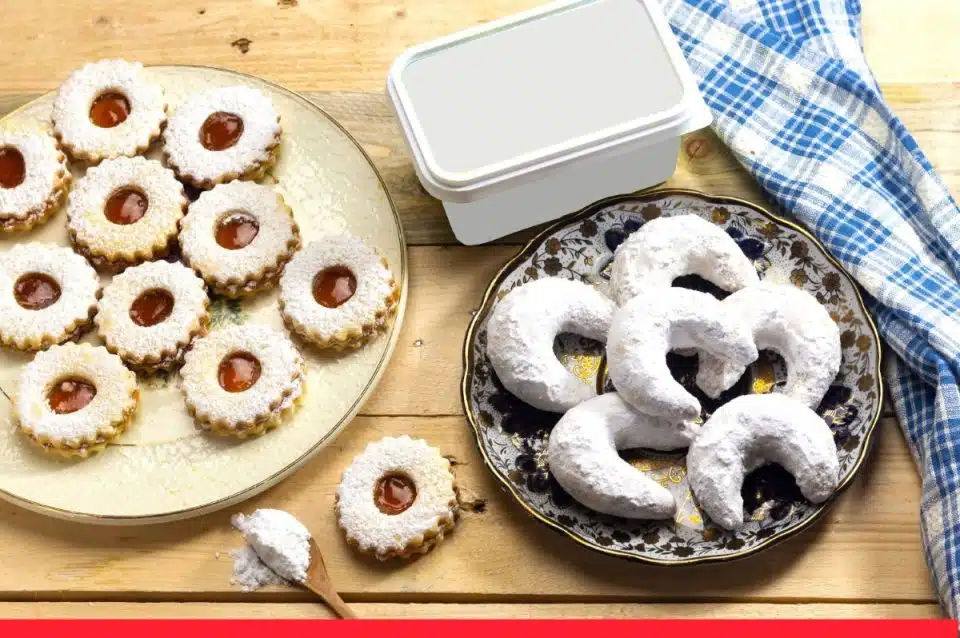
Kaab el ghzal, also known as gazelle horns, is one of the oldest known Moroccan sweets and has passed down through many generations. It used to be considered a delicacy, reserved exclusively for the elite due to the use of high-quality ingredients and the great skill required.
Almond paste is wrapped in a very thin dough, and it is all scented with orange blossom. The hint of orange transports most Moroccans on a nostalgic journey into the past.
Kaab el ghzal was (and still is) one of the fundamental pastries served during weddings and on special occasions. It is also served with Moroccan tea in the afternoons at some of the fanciest cafés.
10. Bastilla

Bastilla is one of the fanciest Moroccan dishes. Back in the day, it was the dish to serve on special occasions such as weddings, but now it’s available in almost every Moroccan restaurant throughout the year.
The original recipe was based on two main elements: pigeons and almonds. This is a highly successful sweet and sour combination separated by a very crispy werqa pastry. In one bite, you experience the flavors of almonds, cinnamon, orange blossom water, tender pigeon, fresh parsley, and eggs.
The eggs are used with reduced sauce, creating a thin layer that acts as a bridge between the savory pigeon filling and the rich almond.
This iconic dish never fails to impress, but, today, new versions of bastilla have been created, inspired by the original recipe. One popular variation is chicken bastilla, a more affordable option but equally delicious. There is also a seafood bastilla, but this comes without the sweet element. These adaptations allow us all to enjoy the flavors of bastilla in ways that suit our preferences.
11. Msemmen (Square Moroccan Pancakes)

Msemmen is often described as Moroccan pancake bread. It is known for its buttery and flaky texture, which adds to its deliciousness. This amazing treat is made with a base of flour, semolina, and butter which is then enhanced with sweet or sour fillings such as cheese, olives, honey, or jam.
Msemmen is one of the daily elements of street food breakfasts. It is very common to serve freshly baked Msemmens with tea in every Moroccan household as an afternoon snack.
12. Meqrout

Meqrout is a very sweet and crunchy pastry that is often served alongside chebakya. The main ingredients are semolina, date paste filling, and honey. Meqrouts are cut in a diamond shape, deep-fried until golden, and soaked in honey. The result is a sticky and absolutely delightful sweet.
During Ramadan, meqrout is often served together with harira. Some people prefer meqrout to chebakya, as it has higher nutritional value given the date paste filling. However, it’s important to note that meqrout can be an explosion of sweetness, so moderation is advised.
13. Jawhara

Jawhara, also known as the Jewel, lives up to its name as a timeless classic of Moroccan pastries. Despite its simple appearance, the unique techniques and special ingredients mean it stands out, particularly in the sauce and presentation.
Jawhara is basically sweet, crunchy layers of fried pastry scented with orange blossom cream and toasted almonds. The cream is made with milk, sugar, cornstarch, and cinnamon while the pastry is standard Moroccan werqa.
You can alternate the fried werqa with a milk sauce and toasted almonds vertically to get a delicious round tower. You can also decorate it with a topping of your choice (almonds and honey are great options) and bon appétit!
14. Beghrir

Beghrir, also known as Moroccan crepes, is a type of crepe served during breakfast on religious feasts such as Eid al-Fitr and Eid al Adha. It is also enjoyed for iftar during Ramadan. These crepes are unique with their characteristic thousand holes.
They are salty and fluffy, are made with semolina and flour, and are traditionally served with melted butter and honey sauce. As humble as they look, this is one of the trickiest recipes in Moroccan cuisine and many are known to still be struggling to produce it. The crepes need to start developing holes while cooking — the more holes you get the better.
15. Krachel

Krachel, known as grissate in some regions, are sweet Moroccan brioches flavored with sesame seeds, anise, and orange blossom. They are typically served for breakfast or as a snack and can also be found on some Ramadan tables for iftar. Krachel is primarily made with flour, sugar, butter, eggs, and yeast. It is commonly made at home and packed into children lunch boxes.
Krachel worked its way through history among middle-class families and is still one of the most nostalgic Moroccan pastries enjoyed by people of all ages.
___________________________________
This was just a glimpse into the wonderful world of Moroccan sweets. These masterpieces exemplify the mastery of Moroccan cuisine and its ability to create unique and magical flavor combinations. Each and every bite will transport you to the vibrant streets of Morocco, and the fusion of flavors and textures will give you a unique culinary experience.
Related: Most Popular Moroccan Foods
Related: 8 Popular Arabic Desserts
Related: 25 Traditional Algerian Desserts
The post 15 Famous Moroccan Desserts appeared first on Chef's Pencil.
from Chef's Pencil https://ift.tt/3Xqlc4L
via https://chefsspenncil.blogspot.com
